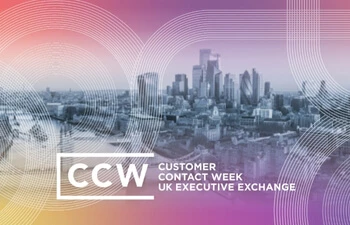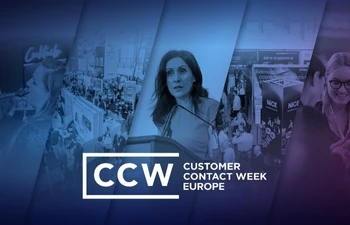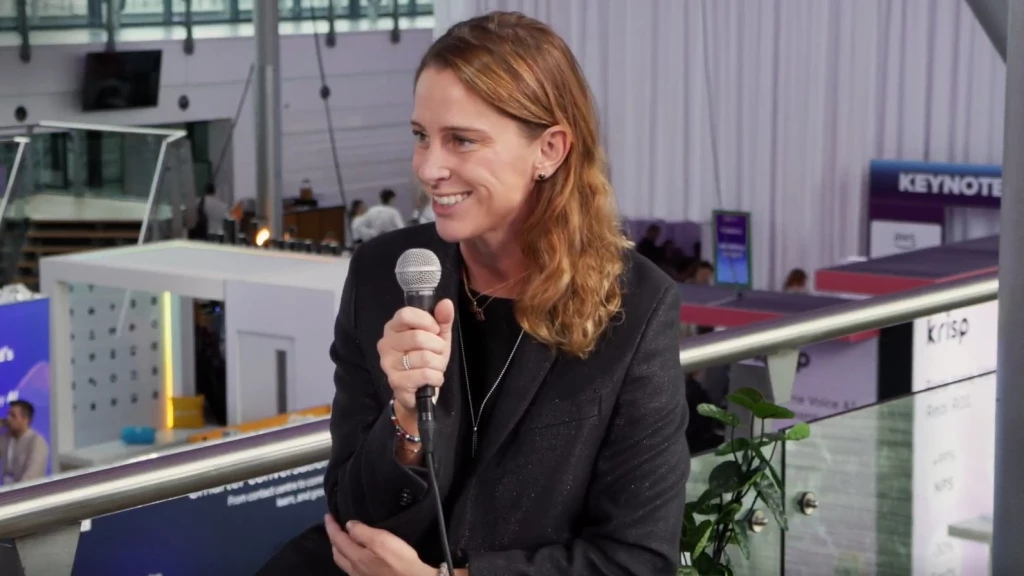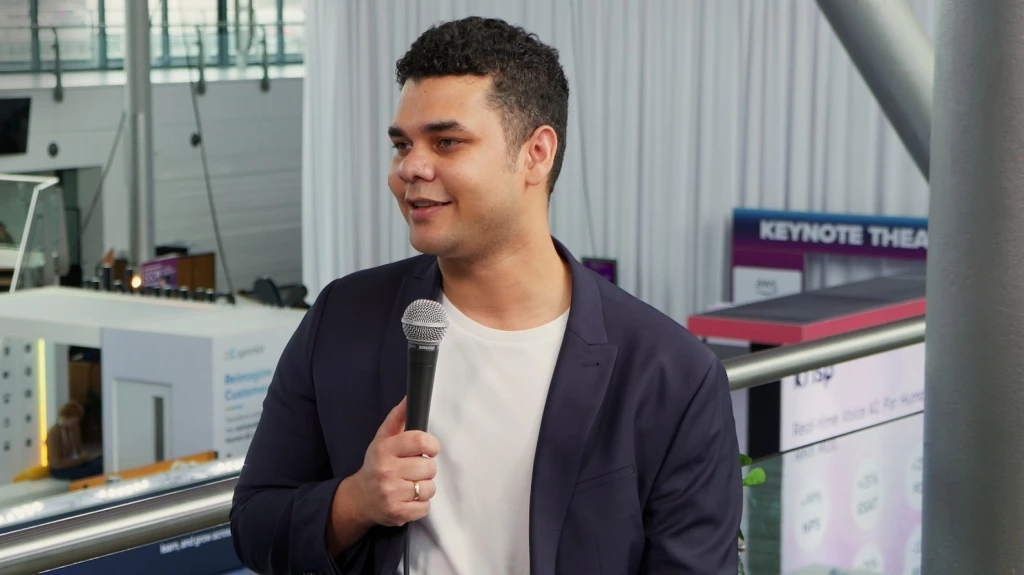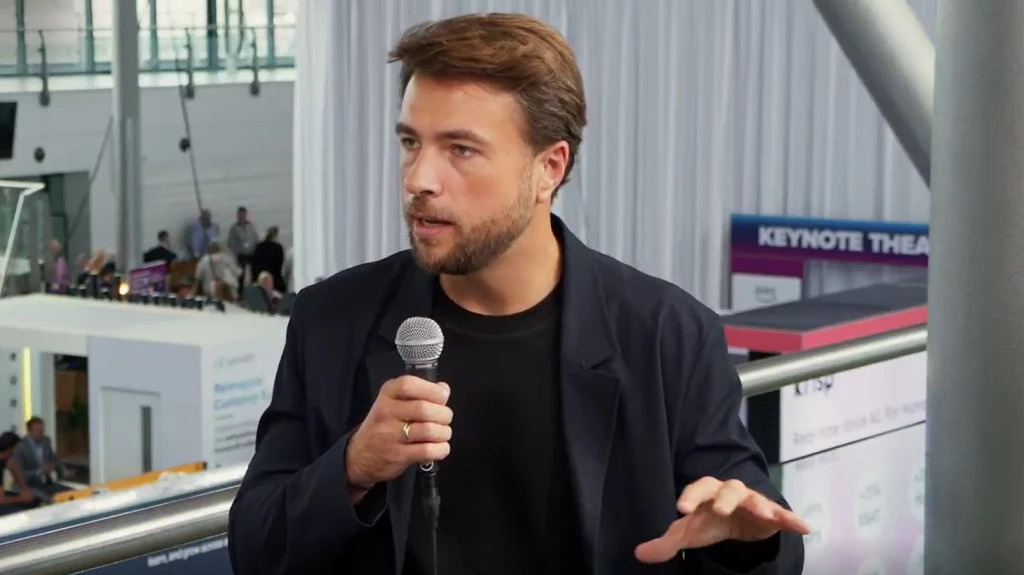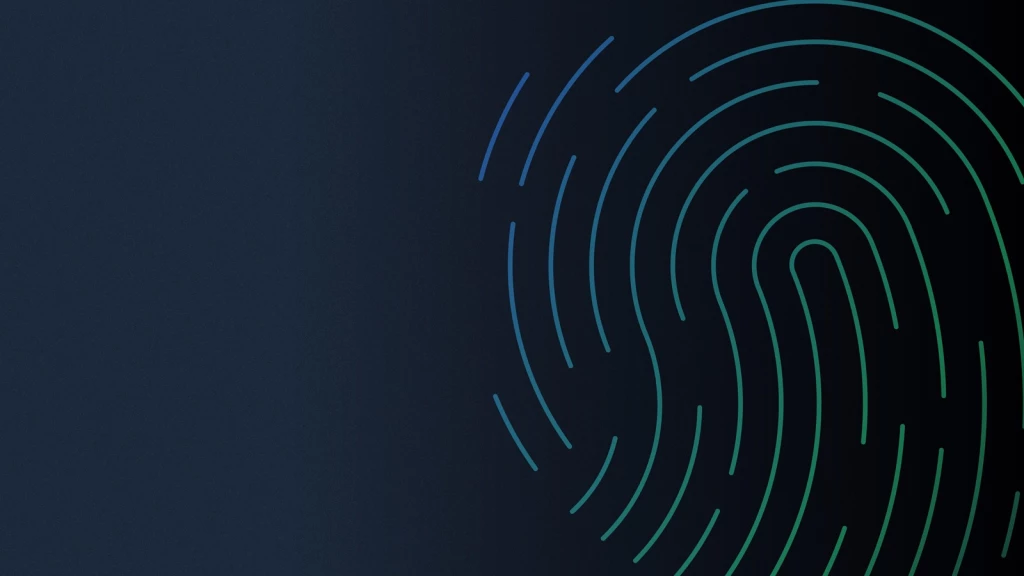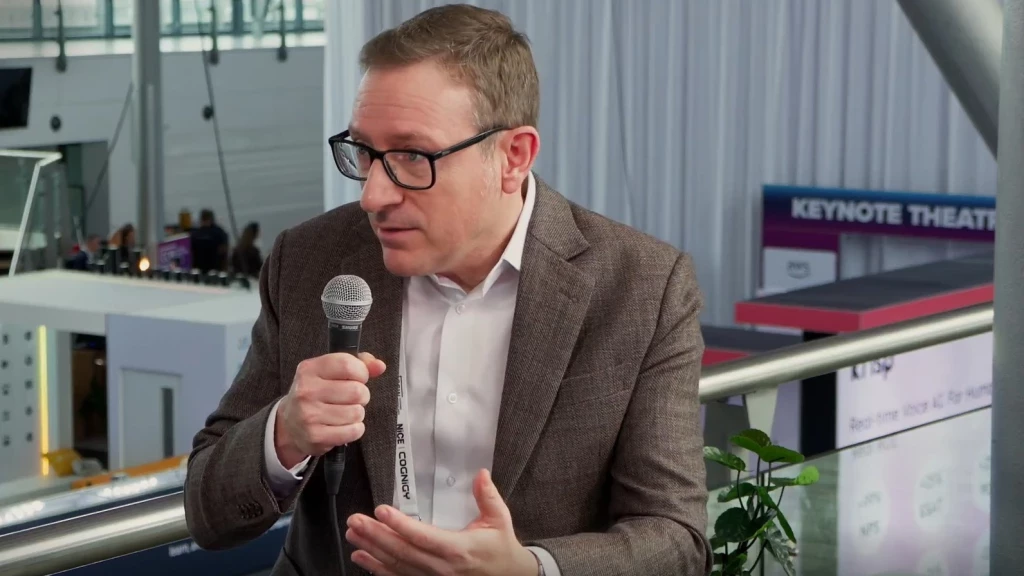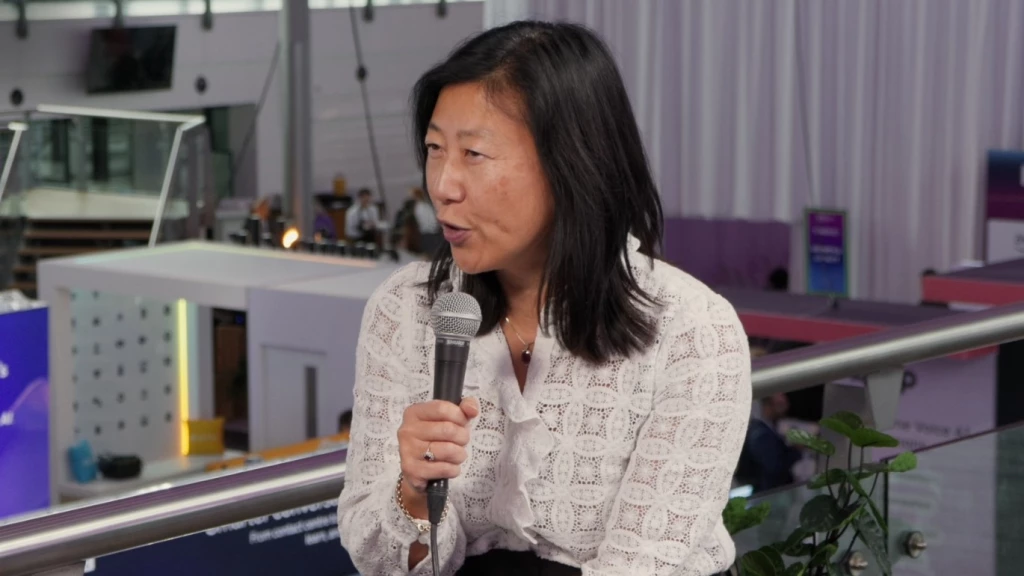Inside Virgin Media O2’s Omnichannel CX Overhaul
Virgin Media O2’s Director of Total Customer Experience and Digital in Life, Emilie Hill, shares how the business is confronting today's complexity at scale.
Add bookmark
One broken handoff. One lost customer. That’s the omnichannel reality.
Indeed, consumers today no longer think in terms of channels; they think in moments – and they expect those moments to connect. Yet many organisations are still not equipped to meet this mandate, operating in silos and delivering inconsistent messaging and disjointed brand experiences. The path forward isn’t simply more digital or more technology – it’s a strategic reimagining of how customer journeys are designed, orchestrated, and operationalised across the enterprise.
In this interview, Virgin Media O2’s Director of Total Customer Experience and Digital in Life, Emillie Hill, shares how the business is confronting this complexity at scale. From aligning decisioning platforms to shifting cultural mindsets, the organisation is laying the groundwork for a unified, data-led approach to customer service. The conversation explores how Virgin Media O2 is embedding omnichannel into the core of its customer strategy – turning fragmented interactions into cohesive journeys that drive both loyalty and commercial value.
Driving commercial success through seamless omnichannel CX
Simon Hall: Your role at Virgin Media O2 sits at a fascinating intersection – Total Customer Experience and Digital in Life. Can you walk us through what that actually looks like day-to-day, and how that framing reflects the way CX has evolved in the digital era?
Emilie Hill: That distills the intent, exactly – the evolution of CX. I started purely on the digital side of the business – and even then, within a fairly small subset. Our digital transformation began in earnest in 2020. Prior to that, we were working with a great deal of legacy technology and, frankly, legacy thinking – particularly in how we served customers in a fast-moving environment.
To keep pace, we needed more flexible architecture and more agile ways of working. I stepped into my digital-focused role at the tail end of 2020, and the focus over the next three years was on transforming our digital experiences and capabilities for existing customers. We began with our commercial products, specifically building our digital base management system. That was a strategic priority at the time as we were preparing to merge with O2. Cross-selling effectively into each customer base was essential, and we harnessed our data sets to identify customer preferences and likely buying behaviour. We also leaned heavily on improving the user experience across our online storefronts.
At the outset, my work was very much grounded in commercial priorities and performance – which feels somewhat ironic given where I am today. Looking back, it’s clear that we should have been more customer focused. Our decisions were heavily shaped by revenue goals. It was an approach reflective of the business at the time – Virgin Media O2 has always had a strong focus on profitability.
As my role evolved, I was asked to take on responsibility for the care side of the business. My initial reaction was mixed: On one hand, I was pleased to be expanding my remit. On the other, I questioned the fit – I considered myself a commercial leader and taking on customer care felt like an odd trajectory.
"To drive sustainable commercial success, you must implement a seamless, effective customer experience. It reshaped my approach to customer strategy."
What shifted my thinking was the framing: By taking on this new function, I would have visibility across more customer interactions – more scope to influence commercial outcomes directly. In retrospect, it was a pivotal moment in my career. It reinforced a fundamental truth: To drive sustainable commercial success, you must implement a seamless, effective customer experience. It reshaped my approach to customer strategy: I came to understand that while messaging sets the tone, the real challenge lies in consistently delivering on it – and that turned into a central purpose for me. With a background in psychology, I’ve always been fascinated by how people think and behave – and working in the care paradigm offered a chance to explore that in a meaningful way.
Certainly, there’s a depth of intent behind customer interactions and understanding those nuances is key to serving them well. From a digital perspective, we’ve made significant investments in enhancing both the user experience and our data capabilities. We’ve built advanced tools – such as next-best action models – that allow us to anticipate customer needs and guide their journey in a more personalised, intuitive way, whether they’re on the website or in the app.
One year ago, my remit evolved again to include oversight of the broader customer experience function. Traditionally, our customer experience approach was anchored in feedback loops – primarily voice-of-the-customer data. These insights were valuable, but the teams responsible for them often operated at the margins, without the authority to drive systemic change.
Elevating the end-to-end customer journey: the Total Customer Experience model
SH: And that’s what led to the introduction of your Total Customer Experience model?
EH: You’re spot on. This novel idea came into play. And it was designed to address multiple big challenges.
First and foremost, how do we align the entire organisation behind a unified customer agenda?
That has been a significant undertaking, and while the work is ongoing, we’ve made real progress in bringing together the core customer touchpoints. The aim is to bring product, operations, and digital together around a shared mission: To solve the right problems collaboratively and elevate the customer journey from end to end.
"We’re turning those insights into sharp, actionable problem statements – then mobilising cross-functional teams to co-create solutions. The result? Shared ownership and true accountability for outcomes that matter."
Another challenge we set out to negate through Total Customer Experience was the need for more agile, cross-functional ways of working. To my earlier point, our customer experience function has historically been insight-led – focused on collecting and reporting customer feedback. That capability still exists and continues to play a valuable role. Now, though, we’re turning those insights into sharp, actionable problem statements – then mobilising cross-functional teams to co-create solutions. The result? Shared ownership and true accountability for outcomes that matter.
Equally critical was addressing our fragmented approach to omnichannel. Our different channels had typically operated in silos. And that fragmentation made it difficult to power seamless customer experiences. The opportunity with Total Customer Experience has been to harmonise those efforts and align everyone around what customers value and where they struggle.
The operation is ongoing, and challenges remain, yet there are encouraging signs. We’ve concentrated our initial efforts on the first 90 days of the customer lifecycle. This period is both foundational and complex. If we get that experience right, we set the tone for the entire relationship. It’s also where many of the most common pain points sit. By targeting this stage, we’ve made significant headway and we’re driving measurable improvements.
And so, bringing us full circle back to the intersection of my role: It’s multifaceted.
I still lead our digital work, and in many ways, that has been a natural fit with the Total Customer Experience agenda. Part of the rationale for housing both functions within the same team is that digital represents our target state from a channel perspective. It’s also where customer expectations are increasingly centred. Consumers want intuitive, proactive, data-driven experiences – and those demands are being set, not by telecommunications providers, but by digital-native brands they interact with daily. Addressing the needs of today’s customer takes more than advanced technology or richer data – it calls for a wholesale transformation in the way experiences are shaped and sustained.
Elevating omnichannel CX through data analysis and experience mapping
SH: Virgin Media O2 has evidently been undergoing a reinvention around omnichannel CX. Can you rewind and set the scene for us – what prompted this transformation, and what kind of shift did it demand from the organisation?
EH: As part of establishing our Total Experience strategy, we commissioned a comprehensive review – a massive project two to three months in the making. We partnered with Oxford Strategic Marketing to support. And while the original brief was scoped as a service design initiative, it quickly evolved into something far more foundational.
Initially, the goal was to map out our customer experiences – not in the traditional journey management sense, but in a way that gave us an unfiltered view of the front-end experience while simultaneously unpacking the processes and capabilities behind it. That distinction was important. At Virgin Media O2, many of our challenges stem from structural gaps beneath the experience layer – areas where technology is often used as a short-term fix rather than a long-term solution.
As the review progressed, it became increasingly clear that we lacked a cohesive customer strategy. We weren’t aligned on what a great customer experience should look like. Indeed, we had strong signals from customers in terms of feedback and pain points, but we didn’t have a shared understanding of how those issues manifested within our operations.
So, to close that gap, we conducted a full data deep dive – analysing why customers contact us, what those interactions result in, and what actions follow: Whether it's churn, multiple repeat contacts, or discount offers. The aim was to create a comprehensive 360-degree view of the customer reality. We complemented that with extensive experience mapping, bringing together stakeholders from across the business to build a holistic picture of what was happening across our core channels: What’s happening in the contact centre? In digital? From a data and operational perspective? Through that process, we identified the key experience concepts and systemic challenges that needed attention.
"It wasn’t until we examined the data that we were able to crystallise the problem into a single, compelling statistic."
One of the most compelling themes that emerged from the data review was the issue of omnichannel complexity. The data revealed that 80% of our customers needed to engage with multiple channels to resolve a single issue. We had long suspected that omnichannel was an area in need of work, but it wasn’t until we examined the data that we were able to crystallise the problem into a single, compelling statistic. And that number became a catalyst for action – it elevated omnichannel from a known challenge to a core pillar of our strategic agenda.
The cost of lacking a seamless brand experience
SH: Once the challenge was clear, how did you start tackling it at a practical level?
EH: When we progressed into the service design phase, the patterns became unmistakably clear. Across nearly every stage of the customer lifecycle, we found that two or three channels were frequently involved in resolving overlapping aspects of the same issue. That level of disconnection doesn’t just impact efficiency – it dilutes the overall experience for the customer.
Our solution was grounded in a bottom-up methodology: We brought our data together, layered it with qualitative insight from cross-functional teams, and mapped the experience through the eyes of the customer. This helped us translate reality into tangible next steps. What we uncovered was a highly complex channel ecosystem; one without clearly defined roles across disparate touchpoints. In practice, that means customers are left to navigate multiple broken paths to resolve even simple problems.
The case for omnichannel transformation was equally strong through a commercial lens. In our business, the most effective way to drive change is to link it to financial impact – and our disjointed omnichannel experience was damaging both revenue and customer trust.
One of the clearest examples of that is pricing inconsistency across channels. We’ve observed a noticeable trust gap in the digital space. Customers have learned – through experience and publicly available advice – that they can often secure better deals by calling us. In fact, if you search “Virgin Media O2 renewal offer” online today, the AI-generated summary may pull content directly from sources like Martin Lewis, advising customers to call in for a better price.
"The absence of a seamless brand experience was costing us – financially and experientially."
That dynamic undermines our digital channels and erodes confidence. It conditions customers to bypass digital entirely, which in turn increases contact centre traffic, drives up operational costs, and leads to concessions that may not be commercially justified. The absence of a seamless brand experience was costing us – financially and experientially. Fixing our omnichannel model became a top imperative, not just to improve the customer journey, but to enable more strategic, scalable, and cost-effective service.
How Virgin Media O2 defines a truly omnichannel CX
SH: The phrase “omnichannel” has been around for years, but in many organisations it still means simply having multiple touchpoints. How does Virgin Media O2 define a truly omnichannel CX, and what distinguishes that from just being present on many platforms?
EH: For us, omnichannel means being truly joined up – where data, decisioning, and delivery are unified across every customer touchpoint. It’s about ensuring consistent, accurate information flows seamlessly between channels, and that decisions made in one environment are reflected in others. If there's variation, it's intentional – part of a clearly defined strategy, not a byproduct of disconnection.
At Virgin Media O2, our north star is a customer-first omnichannel model. We’re not fully there yet, but the vision is clear cut: Rather than organising around channels, we organise around the customer. Of course, channel performance is important, but real transformation begins when the narrative shifts to what the customer needs, followed by collective alignment across the business to meet that need, regardless of where or how it’s delivered.
That shift requires more than just tweaks around the edges. It demands a cultural change – moving from individual channel ownership to shared accountability for the entire customer experience.
How Virgin Media O2 is delivering predictive customer experiences
SH: That tees up my next question. There’s a large movement in the industry right now toward experience intelligence – moving from “passive listening” to “proactive, predictive CX”. What does that transformation look like – and what does it demand from both technology and teams?
EH: In the digital space, we’ve made big strides toward delivering predictive customer experiences.
A core example is our use of next-best-action models to personalise customer interactions. As soon as a customer logs into their account, for instance, the hero banner they see is dynamically powered by these models – tailored to reflect their context. If a customer has an unpaid bill or is nearing service restriction, we prioritise messaging that prompts payment or sets up a plan. If there’s been a recent outage, we proactively acknowledge the issue and offer appropriate support. It’s about using real-time data to anticipate needs and guide the interaction in a way that feels helpful and relevant.
"We’re exploring how to better harness AI and customer data to not only anticipate needs but also invite customers to shape the kinds of interactions they want from us."
Beyond digital products, we’re also evolving how we apply predictive intelligence across communications. A major focus is transitioning to more trigger-based messaging. Case in point: our Smart Support – a capability that proactively recommends connectivity solutions, such as in-home Wi-Fi pods, when we detect performance issues. While there’s real momentum, there’s still work to do. We’re exploring how to better harness AI and customer data to not only anticipate needs but also invite customers to shape the kinds of interactions they want from us. That two-way dialogue will be key to driving relevance.
From an omnichannel perspective, our ambition is set – but first we need to resolve the friction point that our channels don’t always speak to each other: A customer might receive a promotional SMS, then get a different offer on a call, and later see yet another online – all for the same product. These misaligned moments are inconsistent and spotlight a deeper need for technological integration.
Omnichannel CX: from insight to action
SH: Data is often heralded as the holy grail of customer experience, yet many organisations still struggle to turn insight into action. What strategies have helped Virgin Media O2 bridge that gap between data capture and meaningful omnichannel personalisation at scale?
EH: We have a strong and effective data product function, and it’s been instrumental in driving improvements within individual channels. Currently, each channel owns its individual use cases and engages directly with the data product team to deliver against those priorities. It’s a model that works well for optimising performance within a single channel, yet it doesn't always serve the broader, end-to-end customer experience.
That’s the pivot we’re making now: Shifting from channel-specific to shared, cross-channel use cases that reflect the full customer journey. It’s about designing data solutions that enable a more overarching view – solutions that serve not just the needs of a channel, but the needs of the customer as they navigate through our ecosystem.
For example, rather than focusing on isolated transactions, we’re asking ourselves how we can empower our agents with a predictive view of customer intent. Could we build data products that proactively surface what the customer is likely experiencing, enabling more joined-up support? That kind of capability would look different depending on the journey stage – but it should be grounded in a unified experience strategy.
We've unlocked real value within single channels. The next phase is about orchestration – moving from siloed optimisation to enterprise-wide intelligence.
Building unified infrastructure for personalised customer journeys at scale
SH: And what about the infrastructure that's underpinning your operation? Unifying siloed technology ecosystems is easier said than done – especially in legacy-rich environments. How are you approaching digital integration not just as a technical challenge, but as a cultural and organisational one?
EH: Today, each channel operates on its own decisioning platform with distinct technologies – and until recently, there was no unified strategy guiding them.
That changed this year.
We formalised a refreshed channel strategy. We’re now deep into a cross-functional programme focused on mapping the current state of our decisioning capabilities: How we communicate with customers, how we manage experiences, and ultimately, what we need to deliver a truly omnichannel model. That means reimagining everything – from how data flows across systems to how we enable seamless, consistent engagement through the digital front-end.
Right now, continuity between channels is limited: Some data may carry over, but full context almost never does. That gap came into stark focus during a recent field immersion. I spent a day shadowing one of our installation engineers and saw firsthand the information that surfaced through their on-site devices. They have access to service history, rescheduled appointments, and agent notes – but those notes often lack clarity and consistency.
What’s missing is a connected, 360-degree view of the customer. The engineer wouldn’t know, for instance, that the customer had tried to resolve the same issue online just two days earlier. Nor would they see what our data models suggest as the next best action or offer. They’re not flying completely blind, yet they are navigating with only partial visibility.
It’s a clear illustration of why building a connected, insight-driven experience – powered by unified data and coordinated decisioning – is foundational to becoming truly omnichannel.
Unifying teams to power omnichannel CX and seamless customer experience
SH: Cross-functional collaboration has become a kind of CX mantra, yet silos persist in many large enterprises. What are some of the methods or mindsets you’ve found most effective in breaking those down?
EH: We’re still in a stage of aligning internal teams around a shared vision – and in a business of our scale, that takes time. It’s arguably been our biggest challenge to date: Evolving from a collection of well-intentioned, detached plans to a single strategy. Admittedly, there’s been real thought, investment, and momentum behind those individual plans – they’re not flawed, but they don’t always serve the whole.
To spark that change, we’ve taken a multidimensional approach. One part is clear, consistent top-down messaging – making omnichannel a visible strategic priority across every function. Executive reinforcement has been a key accelerator, and while the level of traction varies, the direction of travel is clear.
"What we need is a broader change in mindset: Treating customer experience as a shared, strategic responsibility with clear ownership, defined outcomes, and a common view of what success really looks like."
But this isn’t just about coordination – it's a cultural pivot as well. Virgin Media O2 is a commercially driven organisation, and that focus can sometimes favour short-term results over longer-term, experience-led decisions. Our task is to reframe customer experience as a commercial enabler, not a compromise; one that delivers impact on a different, but no less critical, horizon. What we need now is a broader change in mindset: Treating customer experience as a shared, strategic responsibility with clear ownership, defined outcomes, and a common view of what success really looks like.
In short, we’re embedding the strategy from the top down – all while building a culture that sees customer experience as a powerful lever for sustainable growth.
~
Emillie Hill will be speaking at the CCW UK Executive Exchange in November alongside a host of other industry thought leaders from the likes of Thomas Cook, The Coca-Cola Company, Groupon, NatWest Group, and PayPal, among many others. Together, we’ll be exploring a range of breakthrough case studies around generative AI, digital-first transformations, and building customer trust.
It promises to be an inspirational event. Come and be a part of it.

